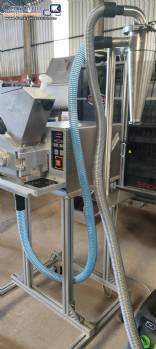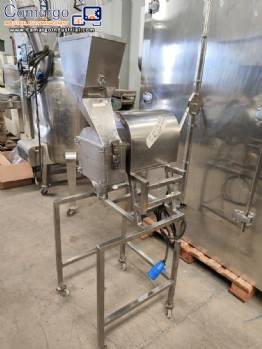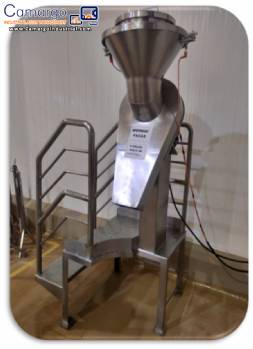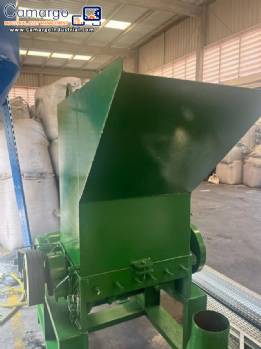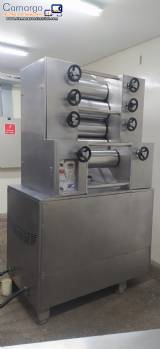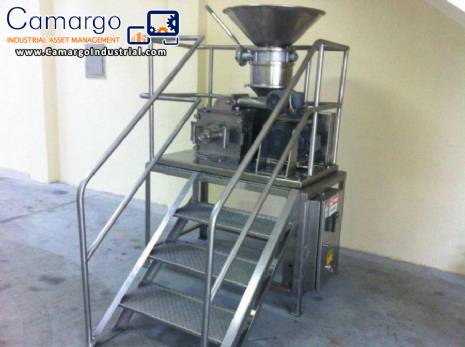The micronizing mill (also known as a knife mill) is used in several industrial sectors to reduce particle size and obtain a finer granulometry of products. It is very common in the pharmaceutical, food, cosmetic and veterinary industries, but each application varies according to the needs of the process. Let's detail a little about how it works and how it compares to other types of mills and micronization equipment.
How a micronizing mill (knife mill) works:
The knife mill works through rotating blades that cut or crush the material. This process reduces the size of the particles, generally reaching finer granulometries, with particles in the micrometer range. It is effective for hard, fibrous and even dry materials. In addition, these mills can be adjusted to different particle sizes, depending on the needs of the process.
Types of mills:
Micronizer Mill (Knife Mill):
Function: Reduces particle size by cutting.
Application: Used in industries that require fine and uniformly distributed particles, such as pharmaceuticals (for active compounds), food (for spices and powdered ingredients) and cosmetics (for fine powders).
Industries: Pharmaceutical, food, cosmetics, veterinary.
Hammer Mill:
Function: Uses rotating hammers to impact and break the particles. The material is processed by repeated impact until it reaches the desired size.
Application: Ideal for harder or more abrasive materials, such as cereals, grains, plastics and heavier materials. It can produce a wider range of particle sizes.
Industries: Food, pharmaceutical, plastics, chemicals.
Difference: More aggressive and robust, it is more suitable for harder materials or those that need to be disintegrated by impact.
Oscillating Granulator:
Function: The granulator blade oscillates, cutting or breaking the material into smaller particles. It can also be used to transform solid products into fine granules.
Application: Often used when the product needs to be fragmented into small pieces in a controlled manner.
Industries: Pharmaceutical, food, cosmetics.
Difference: More controlled, produces particles with a more uniform particle size.
Conical Mill:
Function: Uses a rotating action of conical parts to process materials more efficiently. Can be used to micronize materials that require more rigorous size control.
Application: Often used in the pharmaceutical and food industries for materials that require precision and uniform particle size.
Industries: Pharmaceutical, food, cosmetics.
Difference: Ideal for more sensitive processes, produces fine particles with a controlled size.
Rotary Mill:
Function: Mill that uses the rotating movement of discs or cylinders to reduce particle size.
Application: Used to reduce harder particles or materials that need to be processed in large quantities.
Industries: Food, pharmaceutical.
Difference: Less precise in terms of particle size control compared to knife or conical mills, but more efficient in large volumes.
Difference between these mills and their applications in micronization:
Micronization is the process of reducing particle size to very small levels, often below 100 micrometers. It is a crucial process in several industries, especially when greater bioactivity or solubility of products is desired.
Knife mills (micronizers) are more precise in terms of fine particle size control, but may not be as robust compared to hammer mills, which are more effective in impact processes and harder materials.
Hammer mills are generally used for harder materials and require a more aggressive grinding process, but may not be ideal for more sensitive materials, such as pharmaceutical ingredients.
Oscillating granulators are gentler and more controlled, and are used when uniformity of particle size is essential, such as in the manufacture of pharmaceutical capsules or cosmetic emulsions.
Conical and rotary mills offer a more controlled and efficient particle reduction for more delicate materials or for processes that require high precision in size distribution.
Reprocessing materials with incorrect particle size?
Yes, these mills can also be used in reprocessing processes for materials that have inadequate particle size. For example, when a production batch has larger or smaller particles than expected, mills such as knife mills or hammer mills can be used to correct this. This is common in the food, pharmaceutical and cosmetic industries, where uniformity of particle size is crucial to the quality of the final product.
The use of these mills in industries is normal and expected ?
Yes, the use of these mills is not only expected, but essential in many industries. Controlling particle size and achieving fine, uniform particles has a significant impact on the solubility, absorption and efficacy of products. In the pharmaceutical and cosmetic industries, precision is vital to ensure that end products perform as intended. In other industries, such as food and veterinary, micronization is also important to improve product consistency and quality.
Conclusion:
Micronizing mills, such as knife mills, play an important role in many industries by enabling the production of fine particles with adequate size control. Depending on the need, hammer mills, oscillating, conical and rotary granulators have their own advantages, but they all apply differently in the micronization process. In many cases, the use of these mills is part of normal production processes, including the correction of particle size in unsuitable materials. |


